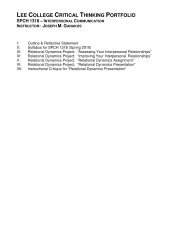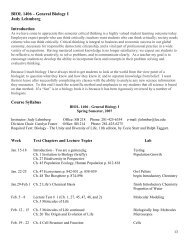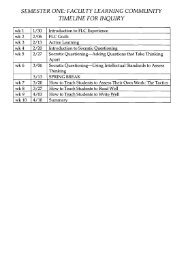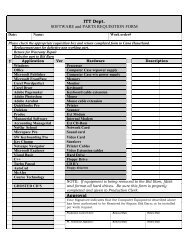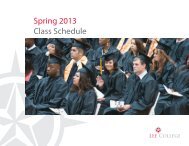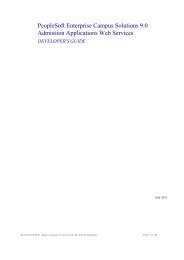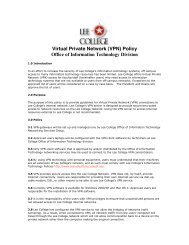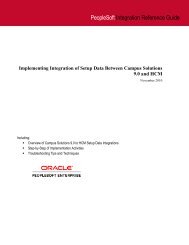Candidate's Statement on Teaching - Lee College
Candidate's Statement on Teaching - Lee College
Candidate's Statement on Teaching - Lee College
Create successful ePaper yourself
Turn your PDF publications into a flip-book with our unique Google optimized e-Paper software.
Critical thinking exercise #1: Tax<strong>on</strong>omy<br />
Many students have difficulties with the c<strong>on</strong>cept of tax<strong>on</strong>omy and phylogeny, and how<br />
biologists organize the milli<strong>on</strong>s of different species that make up the living world. As a prelude<br />
to this exercise we talk about evoluti<strong>on</strong> and how it occurs. Basically, over time different<br />
populati<strong>on</strong>s of the same species accumulate characteristics that are different from other<br />
populati<strong>on</strong>s of the same species, and ultimately accumulate so many different traits that they<br />
become different species. But because these new species share similar ancestors, they still share<br />
many of the same characteristics (i.e. they may look very much alike). So the challenge for the<br />
tax<strong>on</strong>omist is to find characteristics that allow them to differentiate between species. In order to<br />
simulate this task, I break up the class into 4-5 teams and give each team an identical bag of<br />
hardware:<br />
Their first task is to look at the hardware and come up with a list of characteristics (traits)<br />
for each individual piece. Students usually start this list with shape, size, and color. Others also<br />
list the presence of threads, the presence of a slot, and maybe the presence of a “barrel” or<br />
“head”. Given these traits, they then need to figure out what is more closely related to what. At<br />
this point, students usually want to “marry” <strong>on</strong>e piece of hardware to another, and have other<br />
pieces give birth to other species. While crossing (hybridizati<strong>on</strong>) can in fact occur, these<br />
interacti<strong>on</strong>s usually produce infertile offspring. Therefore <strong>on</strong>e of the rules of this exercise is<br />
there is no “marrying”; <strong>on</strong>e species gives rise to <strong>on</strong>e or more new species. When doing this I tell<br />
them they have to be prepared to justify how they create their hardware family tree, there has to<br />
be some rati<strong>on</strong>al reas<strong>on</strong> to group species and lineages. Students come up with a range of results,<br />
some more justifiable than others, they can look like this:



